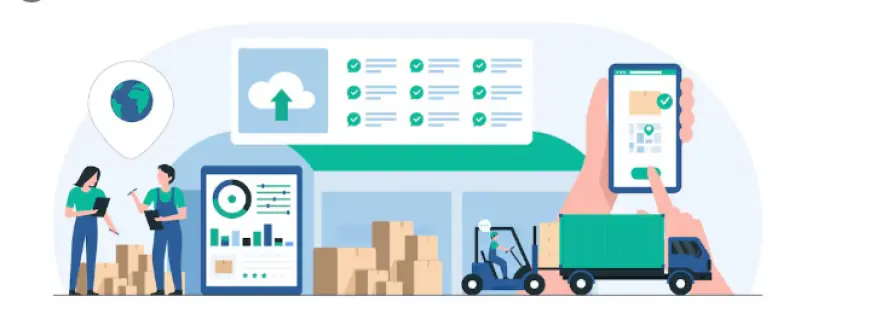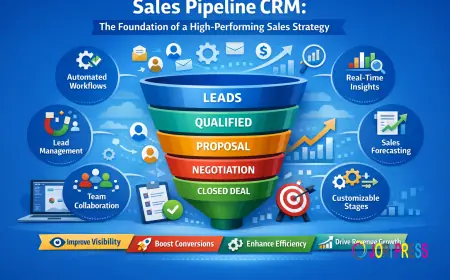Logistics App Development Cost Breakdown: What to Expect Before You Invest

How much should you really expect to pay for logistic app development? Is it just about coding and design, or is there more lurking beneath the surface? If you’ve ever wondered what drives the costs behind developing a logistics app, you’re not alone. Many businesses jump in without knowing the full story and end up surprised by hidden expenses or missed features.
In today’s fast-paced world, logistics apps are the backbone of efficient delivery, fleet management, and customer satisfaction. But before you invest thousands or even hundreds of thousands of dollars in logistic app development, it’s crucial to understand exactly what factors influence the overall cost.
Why? Because knowing the cost breakdown helps you make smarter decisions, plan your budget better, and avoid costly pitfalls. After all, “Failing to plan is planning to fail,” as Benjamin Franklin famously said. So, what exactly goes into the pricing of a logistics app? Let’s find out.
What Is Logistics App Development and Why Is It Important?
Before diving into costs, it helps to clarify what logistics app development entails. A logistics app is a software solution designed to optimize and manage various aspects of the supply chain—fleet tracking, route optimization, delivery management, warehouse integration, customer notifications, and more.
Developing such an app is complex. It’s not just about creating a pretty interface; it requires integration of real-time data, GPS systems, AI algorithms, secure payments, and user-friendly design. The more advanced the features, the higher the development costs.
Businesses use these apps to reduce operational costs, improve delivery accuracy, and gain a competitive edge. But investing in a logistics app is a significant commitment, and understanding where your money goes can save you headaches later.
Factors Influencing Logistics App Development Cost
Scope and Complexity of Features
The list of features your app needs will shape your budget significantly. A basic app that offers only core features like order tracking and delivery status notifications costs far less than one packed with advanced capabilities such as AI-driven route optimization, warehouse automation, or multi-modal transport management.
Take the analogy of building a house again. A simple, functional bungalow with the essentials costs less than a smart home equipped with automated climate control, security systems, and luxury finishes. In the logistics app world, every additional feature adds layers of complexity, increasing development time and cost.
Consider features like real-time driver tracking, geofencing alerts, proof of delivery with photo capture, and automated billing. Each requires specialized coding, third-party integrations, and thorough testing. The more features, the higher the price tag—but also the greater the competitive advantage.
Platform and Technology Stack
Are you targeting Android, iOS, or both? Native apps, which are developed separately for each platform, demand distinct development efforts, sometimes doubling the budget. Cross-platform frameworks like React Native or Flutter can save money by sharing codebases but might not support all native features equally well.
The backend technology stack—such as the choice between Node.js, Python, or Java—also influences costs. More modern or scalable technologies can raise development expenses upfront but reduce long-term maintenance and scaling costs. The same goes for cloud infrastructure choices like AWS, Azure, or Google Cloud, where pricing models vary.
Design and User Experience (UX/UI)
User experience is not just about looks—it affects how effectively your staff and customers can use the app. Customized, intuitive UI/UX design requires experienced designers who understand the needs of drivers, dispatchers, and customers.
Imagine an app that drivers struggle to navigate in the field; it causes delays and frustration. Investing in design early pays dividends in smoother operations and better adoption. The complexity and quality of the design process—wireframing, prototyping, user testing, and refinements—directly impact costs.
Integration with Third-Party Systems
Your logistics app will rarely function as a standalone system. Integration with GPS providers, payment gateways, warehouse management systems (WMS), enterprise resource planning (ERP) software, and customer relationship management (CRM) tools is essential for seamless operation.
Each integration involves understanding APIs, handling data synchronization, and ensuring security. Some third-party services have licensing fees or usage costs, adding to the total budget. Complex integrations can substantially increase both development time and expenses.
Development Team Location and Expertise
The geographic location and skill level of your development team are major cost drivers. Developers in North America or Western Europe typically charge higher hourly rates than teams in Eastern Europe, India, or Southeast Asia. However, the experience and communication capabilities of the team are equally critical.
Choosing a lower-cost team without sufficient expertise may cause delays, quality issues, or rework, ultimately increasing overall costs. Conversely, investing in a reputable team with logistics domain experience can improve efficiency and deliver better ROI.
Testing, Quality Assurance, and Maintenance
Testing is often underestimated in budget planning. Rigorous quality assurance (QA) is vital to ensure the app performs reliably across devices, network conditions, and usage scenarios. Security testing is crucial, especially for apps handling sensitive customer data and payment information.
Post-launch, maintenance costs continue to add up. Updates to support new operating system versions, bug fixes, scaling for more users, and feature enhancements require ongoing investment. Ignoring maintenance can lead to technical debt and degraded user experience.
Typical Logistics App Development Cost Breakdown
1. Planning and Discovery Phase
Before the first line of code is written, the project needs a clear roadmap. Planning involves market research, stakeholder interviews, requirement gathering, and technical feasibility analysis.
This phase typically accounts for about 5-10% of the overall budget but is critical to align expectations, define milestones, and avoid costly mid-project changes. Think of it as laying a solid foundation for your logistics app.
2. UI/UX Design
Design transforms ideas into tangible user experiences. It encompasses wireframes, clickable prototypes, graphic design, and user testing.
Design efforts usually consume 15-20% of the budget, reflecting the time and skill required to create interfaces that are both functional and engaging. Good design can make or break adoption, especially among busy drivers and end customers.
3. Frontend Development
Frontend development focuses on what users see and interact with—the app’s interface on smartphones or web browsers. Complexity here depends on the number of platforms targeted and the features offered.
Frontend work can consume 25-30% of the total budget. It requires close collaboration with designers to faithfully translate prototypes into responsive, fast, and intuitive user interfaces.
4. Backend Development
The backend powers the app’s logic, databases, servers, APIs, and integrations. This is often the most complex and resource-intensive part, especially for logistics apps that require real-time tracking, routing algorithms, and secure transactions.
Backend development can take up 30-35% of the budget. It demands expertise in building scalable, reliable, and secure systems that can handle fluctuating loads and complex workflows.
5. Quality Assurance and Testing
Testing covers functionality, usability, security, performance, and cross-platform compatibility. It ensures the app works flawlessly before and after launch.
QA generally consumes 10-15% of the total budget but plays a pivotal role in delivering a bug-free, user-friendly product that meets business goals.
6. Deployment and Maintenance
Deploying the app to app stores, configuring servers, and setting up monitoring are initial post-development steps. Maintenance spans regular updates, security patches, and feature improvements over time.
Together, these phases typically require 10-20% of the budget spread over months or years, depending on your growth and support needs.
Estimated Cost Ranges for Different Logistics App Types
1. Basic Logistics App
If your needs are modest—such as order tracking, delivery status updates, and simple driver management—you can expect costs between $15,000 and $30,000. This option suits startups or small companies entering the market or testing their concept.
While cheaper, basic apps might lack advanced features that can improve efficiency and scalability.
2. Mid-Level App with Advanced Features
A more ambitious app includes real-time GPS tracking, route optimization, warehouse integration, payment processing, and in-app communication. Developing this kind of app typically ranges from $30,000 to $60,000.
This tier fits medium-sized businesses looking to reduce operational costs and improve customer satisfaction with smarter technology.
3. Enterprise-Level App
Large logistics companies or enterprises require fully customized solutions with AI-powered analytics, multi-modal transport support, blockchain integration for supply chain transparency, and stringent security measures.
Such complex projects often exceed $60,000 and can run significantly higher based on scale and customization. The investment is justified by improved operational control and competitive advantage at scale.
Hidden Costs and Additional Considerations
1. Post-Launch Marketing and User Acquisition
Developing the app is just one piece of the puzzle. Marketing your app to drivers, customers, and partners requires additional resources. Onboarding and training are essential to ensure users know how to leverage your app’s capabilities fully.
Failing to allocate budget here can limit your app’s impact, no matter how well-built it is.
2. Legal and Compliance Expenses
Handling customer data, payments, and logistics operations across regions may expose you to various legal requirements. GDPR, CCPA, PCI-DSS compliance, and other regulations require legal counsel and possible adjustments to your app’s architecture or processes.
These legal costs, while often overlooked, can be substantial.
3. Scaling and Upgrading
As your business grows, your app must grow with it. More users, new regions, additional features, and technology updates will require ongoing investment in infrastructure and development.
Budgeting for scalability prevents performance bottlenecks and helps maintain customer satisfaction.
How to Optimize Your Logistics App Development Budget
1. Prioritize Core Features First
Focus your initial investment on features that address your business’s most critical pain points. This approach reduces risk and allows you to validate your app’s value proposition early.
2. Consider an MVP (Minimum Viable Product) Approach
Launching an MVP lets you enter the market faster and gather valuable feedback. You can then iteratively improve the app based on real user data rather than assumptions.
3. Choose the Right Development Partner
Look beyond hourly rates. Experienced teams with logistics domain knowledge can anticipate challenges and deliver higher quality within your budget. Transparency in communication and project management also saves money.
4. Leverage Existing Technologies and APIs
Using third-party services for GPS, payments, and notifications can cut development time and costs. Ensure these services are reliable and scalable to avoid problems later.
Conclusion: Is Investing in a Logistics App Worth It?
So, is the cost of developing a logistics app justified? Absolutely—if you approach it with clear goals and realistic expectations. A well-built app can transform your operations, reduce expenses, and elevate customer satisfaction.
But the journey requires thoughtful planning, choosing the right features, and budgeting for ongoing growth.
Understanding the cost breakdown is your key to unlocking true value from your investment. The question now is: Are you ready to take the leap and build the logistics app that will drive your business forward?
What's Your Reaction?
 Like
0
Like
0
 Dislike
0
Dislike
0
 Love
0
Love
0
 Funny
0
Funny
0
 Angry
0
Angry
0
 Sad
0
Sad
0
 Wow
0
Wow
0

















































